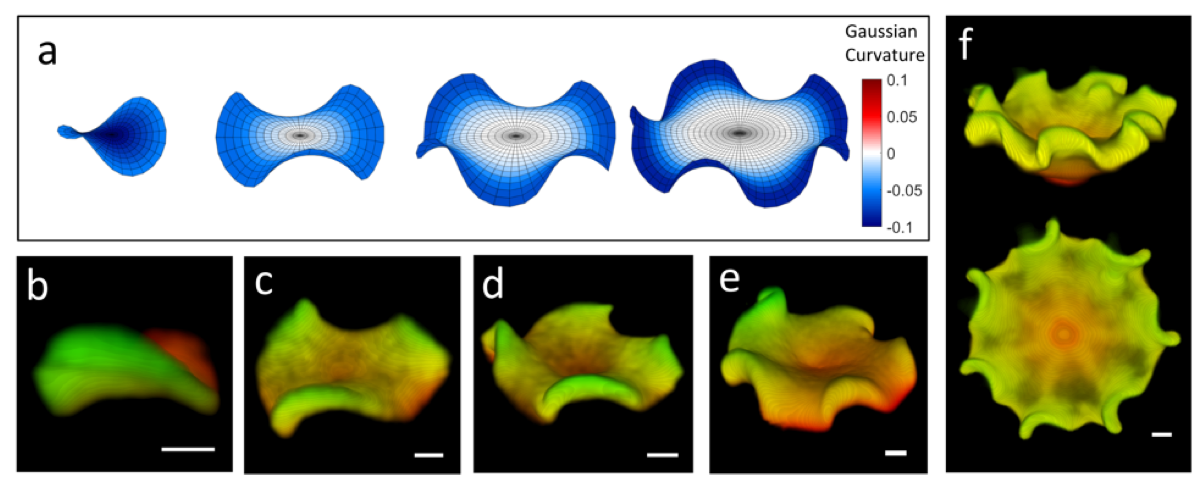 Producing self-assembled structures of prescribed limited size and shape is a major challenge in nanoscience. A major achievement of the MRSEC was to elucidate a new chirality-based mechanism that leads to self-limiting assembly of colloidal rafts. A two-dimensional colloidal membrane with free edges and composed of chiral rod-like viruses is an example where both chirality and membrane deformability are key components of the system. The interplay of chirality and deformability leads to the formation of beautiful three-dimensional Enneper structures driven by the negative Gaussian curvature of the membranes that arises because of the chirality of the molecules. Experiments on membranes formed from filamentous virus were combined with theory and computation in this study.
Producing self-assembled structures of prescribed limited size and shape is a major challenge in nanoscience. A major achievement of the MRSEC was to elucidate a new chirality-based mechanism that leads to self-limiting assembly of colloidal rafts. A two-dimensional colloidal membrane with free edges and composed of chiral rod-like viruses is an example where both chirality and membrane deformability are key components of the system. The interplay of chirality and deformability leads to the formation of beautiful three-dimensional Enneper structures driven by the negative Gaussian curvature of the membranes that arises because of the chirality of the molecules. Experiments on membranes formed from filamentous virus were combined with theory and computation in this study.